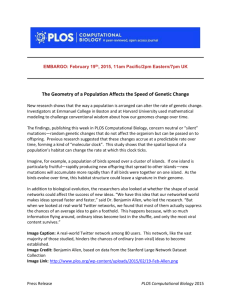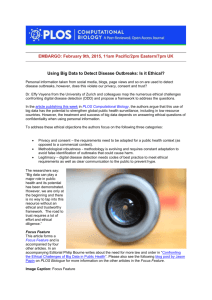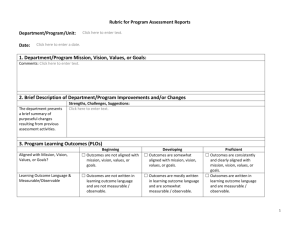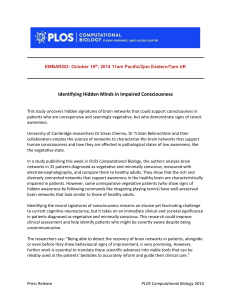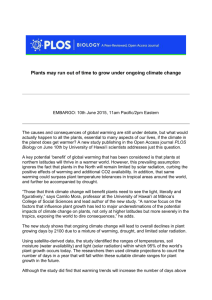Media Release
advertisement
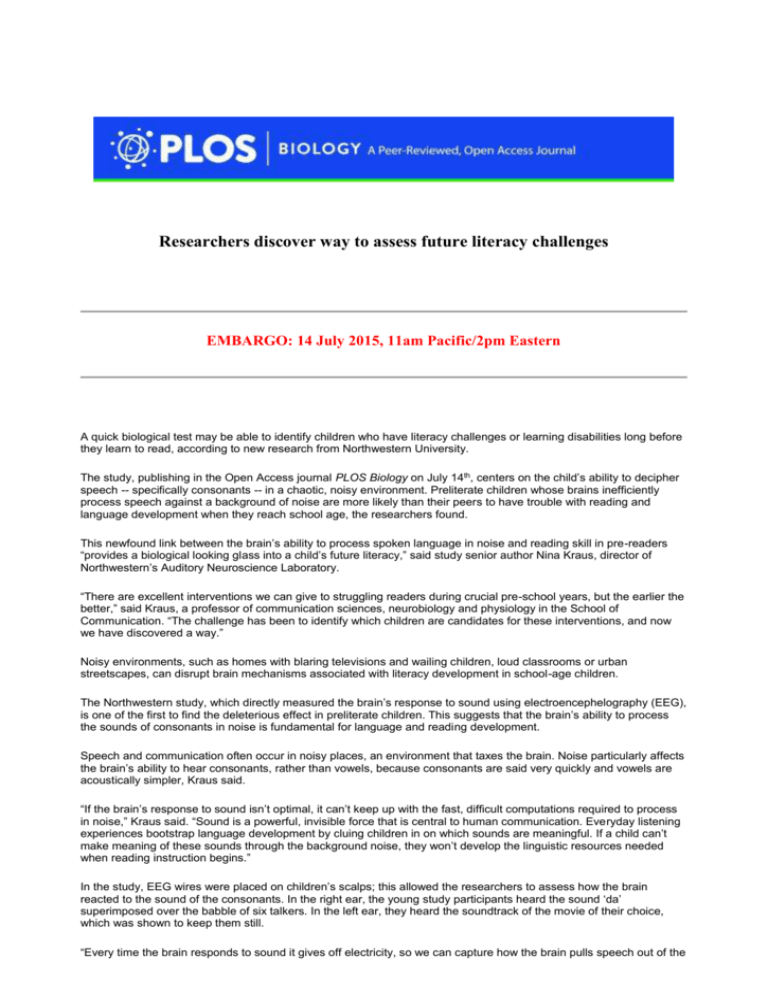
Researchers discover way to assess future literacy challenges EMBARGO: 14 July 2015, 11am Pacific/2pm Eastern A quick biological test may be able to identify children who have literacy challenges or learning disabilities long before they learn to read, according to new research from Northwestern University. The study, publishing in the Open Access journal PLOS Biology on July 14th, centers on the child’s ability to decipher speech -- specifically consonants -- in a chaotic, noisy environment. Preliterate children whose brains inefficiently process speech against a background of noise are more likely than their peers to have trouble with reading and language development when they reach school age, the researchers found. This newfound link between the brain’s ability to process spoken language in noise and reading skill in pre-readers “provides a biological looking glass into a child’s future literacy,” said study senior author Nina Kraus, director of Northwestern’s Auditory Neuroscience Laboratory. “There are excellent interventions we can give to struggling readers during crucial pre-school years, but the earlier the better,” said Kraus, a professor of communication sciences, neurobiology and physiology in the School of Communication. “The challenge has been to identify which children are candidates for these interventions, and now we have discovered a way.” Noisy environments, such as homes with blaring televisions and wailing children, loud classrooms or urban streetscapes, can disrupt brain mechanisms associated with literacy development in school-age children. The Northwestern study, which directly measured the brain’s response to sound using electroencephelography (EEG), is one of the first to find the deleterious effect in preliterate children. This suggests that the brain’s ability to process the sounds of consonants in noise is fundamental for language and reading development. Speech and communication often occur in noisy places, an environment that taxes the brain. Noise particularly affects the brain’s ability to hear consonants, rather than vowels, because consonants are said very quickly and vowels are acoustically simpler, Kraus said. “If the brain’s response to sound isn’t optimal, it can’t keep up with the fast, difficult computations required to process in noise,” Kraus said. “Sound is a powerful, invisible force that is central to human communication. Everyday listening experiences bootstrap language development by cluing children in on which sounds are meaningful. If a child can’t make meaning of these sounds through the background noise, they won’t develop the linguistic resources needed when reading instruction begins.” In the study, EEG wires were placed on children’s scalps; this allowed the researchers to assess how the brain reacted to the sound of the consonants. In the right ear, the young study participants heard the sound ‘da’ superimposed over the babble of six talkers. In the left ear, they heard the soundtrack of the movie of their choice, which was shown to keep them still. “Every time the brain responds to sound it gives off electricity, so we can capture how the brain pulls speech out of the noise,” Kraus said. “We can see with extreme granularity how well the brain extracts each meaningful detail in speech.” The researchers captured three different aspects of the brain’s response to sound: the stability with which the circuits were responding; the speed with which the circuits were firing; and the quality with which the circuits represented the timbre of the sound. Using these three pieces of information, they developed a statistical model to predict children’s performance on key early literacy tests. In a series of experiments with 112 kids between the ages of 3 and 14, Kraus’ team found that their 30-minute neurophysiological assessment predicts with a very high accuracy how a 3-year-old child will perform on multiple prereading tests and how, a year later at age 4 he or she will perform across multiple language skills important for reading. The model proved its breadth by also accurately predicting reading acumen in school-aged children, in addition to whether they’d been diagnosed with a learning disability. “The importance of our biological approach is that we can see how the brain makes sense of sound and its impact for literacy, in any child,” Kraus said. “It’s unprecedented to have a uniform biological metric we can apply across ages.” Other Northwestern co-authors include Travis White-Schwoch, Kali Woodruff Carr, Elaine C. Thompson, Samira Anderson, Trent Nicol, Ann R. Bradlow, and Steven G. Zecker, all of the Auditory Neuroscience Laboratory and department of communication sciences at Northwestern. The team will continue to follow these children in its “Biotots” project as they progress through school. Brain’s ability to process consonants in noisy environment may reflect child's literacy potential • Background noise disrupts brain mechanisms involved in literacy development • One of the first studies to establish brain-behavior links in pre-readers • Results provide ‘a biological looking glass into a child’s future literacy’ • New way to identify which children are candidates for reading interventions Please mention PLOS Biology as the source for this article and include the links below in your coverage to take readers to the online, open access articles. All works published in PLOS Biology are open access, which means that everything is immediately and freely available. Use this URL in your coverage to provide readers access to the paper upon publication: http://www.plosbiology.org/article/info:doi/10.1371/journal.pbio.1002196 Contact: Dr. Nina Kraus 847-491-3181 nkraus@northwestern.edu Citation: White-Schwoch T, Woodruff Carr K, Thompson EC, Anderson S, Nicol T, Bradlow AR, et al. (2015) Auditory Processing in Noise: A Preschool Biomarker for Literacy. PLoS Biol 13(7): e1002196. doi:10.1371/journal.pbio.1002196 Funding: This work was supported by NIH (R01HD069414; http://www.nichd.nih.gov & R01DC01510; http://www.nidcd.nih.gov) and the Knowles Hearing Center (http://knowleshearingcenter.northwestern.edu). The funders had no role in study design, data collection and analysis, decision to publish, or preparation of the manuscript. Competing Interests: The authors have declared that no competing interests exist. Disclaimer: This press release refers to an upcoming article in PLOS Biology. The release is provided by journal staff, or by the article authors and/or their institutions. Any opinions expressed in this release or article are the personal views of the contributors, and do not necessarily represent the views or policies of PLOS. PLOS expressly disclaims any and all warranties and liability in connection with the information found in the releases and articles and your use of such information. About PLOS Biology PLOS Biology is an open-access, peer-reviewed journal published by PLOS, featuring research articles of exceptional significance, originality, and relevance in all areas of biology. For more information visit http://www.plosbiology.org, or follow @PLOSBiology on Twitter. About PLOS: PLOS is a nonprofit publisher and advocacy organization founded to accelerate progress in science and medicine by leading a transformation in research communication. PLOS engages in Open Access advocacy, innovation, and publication of scientific research, making articles immediately available for everyone online, free of restrictions. The organization launched its first journal in 2003 and now publishes PLOS ONE, PLOS Biology, PLOS Medicine, PLOS Genetics, PLOS Computational Biology, PLOS Pathogens, and PLOS Neglected Tropical Diseases. PLOS is headquartered in San Francisco, CA with additional offices in Cambridge, UK. If you would rather not receive future communications from Public Library of Science, let us know by clicking here. Public Library of Science, 1160 BatteryStreet Suite 100, San Francisco, CA 94111 United States
